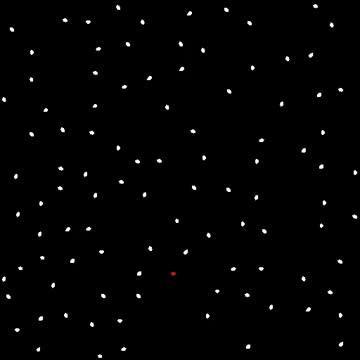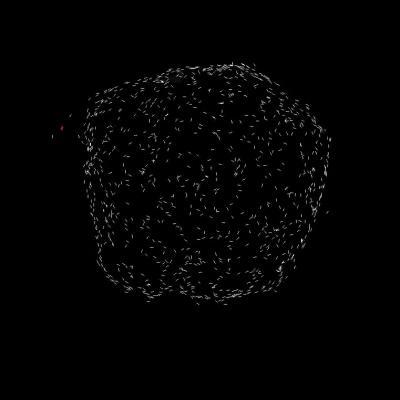All the study's authors are members of the BEACON Center for the Study of Evolution in Action, a National Science Foundation Center that brings together biologists, computer scientists, engineers and researchers from other disciplines to study evolution as it happens.
Studying swarming and unlocking the secrets of why it evolved is a small first step toward understanding how human-level intelligence evolved in nature, a research goal of the team.
"Swarming is a complex behavioral trait that increases the chance for survival," Adami said. "Intelligence is an even more complex trait that also increases the chance for survival, so understanding one will help us understand the other."
"We're trying to learn about the problems that early animals faced that made intelligent behavior a favorable trait to evolve, with the goal of working our way up to understanding how early forms of intelligence evolved into the complex forms of adaptive, social and predictive intelligence humans are capable of," Olson explained. "Essentially, we're trying to digitally reproduce the evolutionary path to human-level intelligence."
"Our main premise is that there is a reason for intelligence and that reason is survival," Adami added. "Intelligence allows us to plan and predict what will happen further and further into the future and then act appropriately. The creature who can predict the furthest into the future will win."

This video shows typical prey behavior when predators are not confused by multiple prey in their visual field. The prey spread out as much as possible while moving around randomly.
Prey are randomly placed within the 512 x 512 arena. The swarm "phenotype" (the particular swarming behavior) does not depend on the initial condition, but the number of swarms that form, whether they will merge or separate, does depend on the initial placement of agents. For the purposes of visualization, 100 prey were cloned from a single genotype, as opposed to the 50 prey used in the fitness evaluation during the actual evolution experiment.
(Photo Credit: Randal Olson, Michigan State University)

This is an example of swarm behavior when predators are confused by multiple prey in their visual field. The prey form multiple cohesive, circular swarms to maximize the confusion effect for the predator.
Prey are randomly placed within the 512 x 512 arena. The swarm "phenotype" (the particular swarming behavior) does not depend on the initial condition, but the number of swarms that form, whether they will merge or separate, does depend on the initial placement of agents. For the purposes of visualization, 100 prey were cloned from a single genotype, as opposed to the 50 prey used in the fitness evaluation during the actual evolution experiment.
(Photo Credit: Randal Olson, Michigan State University)

The picture is of a single swarm that evolved in the model due to predation in the presence of the predator confusion effect. If you think of each white line as a fish or bird (prey) and the red line as the predator, you can see this as a "top-down" view of the swarm if you were looking over them.
(Photo Credit: Randal Olson, Michigan State University)
Source: Michigan State University